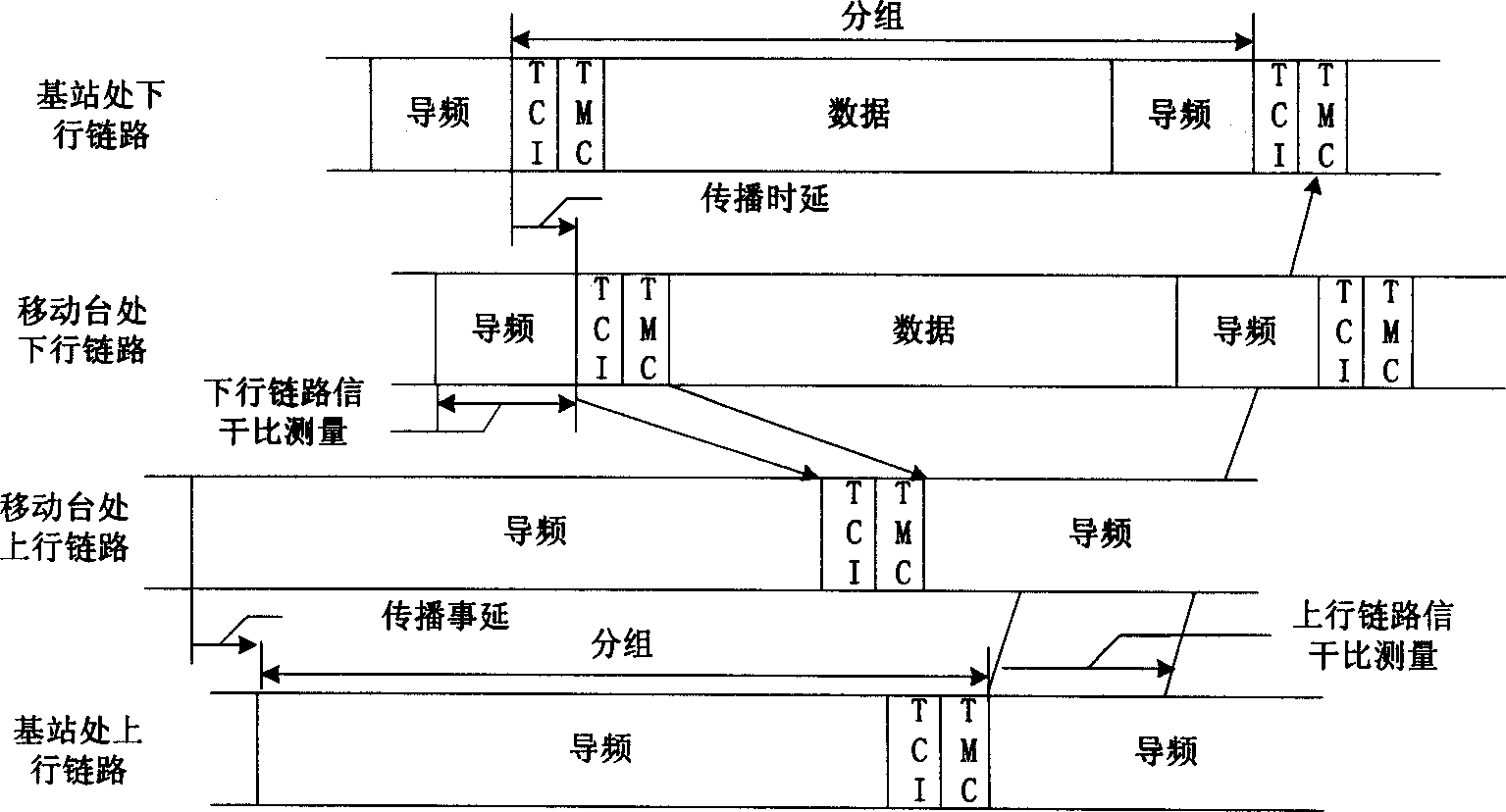Self adaptable transmission for OFDMA system
An orthogonal frequency division multiple access and adaptive transmission technology, which is applied in the field of OFDM cellular mobile communication system transmission, can solve the problems of poor adaptive modulation performance, limited channel correlation, and large channel correlation, etc., to achieve improved error Bit rate performance, improved throughput, and low complexity effects
- Summary
- Abstract
- Description
- Claims
- Application Information
AI Technical Summary
Problems solved by technology
Method used
Image
Examples
Embodiment Construction
[0024] Each component in the invention is discussed separately below.
[0025] 1. Interweaving mode
[0026] In step 3, the interleaving mode needs to be determined. Interleaving mainly changes the correlation of adjacent bits, so as to better achieve the effect of diversity. There are many studies on adaptive interleaving. According to the known channel state information (Channel State Information, CSI), the channel is divided into two states, good and bad. Through interleaving, these two states are in the frequency domain of the OFDM system. Interleaving occurs, so that Viterbi decoding is more effective, and using the same predictor at both ends of the transceiver can realize the synchronization of this algorithm. In another literature, the Markov model of the channel is used to study the performance of interleaving under different fading conditions and the influence of interleaving length and depth on the bit error rate, so as to select the appropriate interleaving lengt...
PUM
 Login to View More
Login to View More Abstract
Description
Claims
Application Information
 Login to View More
Login to View More - R&D
- Intellectual Property
- Life Sciences
- Materials
- Tech Scout
- Unparalleled Data Quality
- Higher Quality Content
- 60% Fewer Hallucinations
Browse by: Latest US Patents, China's latest patents, Technical Efficacy Thesaurus, Application Domain, Technology Topic, Popular Technical Reports.
© 2025 PatSnap. All rights reserved.Legal|Privacy policy|Modern Slavery Act Transparency Statement|Sitemap|About US| Contact US: help@patsnap.com



